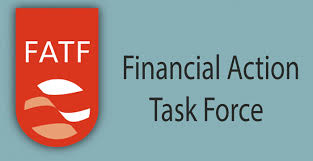India’s Wholesale Price Index (WPI) Records Seventh Consecutive Month of Deflation in October
India’s Wholesale Price Index (WPI) has marked a significant economic trend, registering a seventh consecutive month of deflation in October. The WPI, a key metric gauging inflation at the wholesale level, dipped by 0.17% in October 2023. This decline is primarily attributed to decreasing prices of food articles and a fall in fuel and power prices. The consistent fall in the WPI for seven consecutive months indicates a prolonged period of deflationary pressures in the economy.
This recent development in the WPI holds substantial importance for various government exams, particularly for aspirants preparing for positions in the economic sector, such as banking, civil services, and public service commissions. Understanding the nuances of inflation, deflation, and their impact on the economy is imperative for candidates aiming to secure positions in these sectors.

Why this News is Important
Impact on Economic Policies
The sustained deflationary trend in the WPI holds crucial significance as it influences the formulation of economic policies. The government and policymakers must address this prolonged deflation to prevent adverse effects on the economy.
Relevance for Government Exams
Aspirants preparing for government exams, especially those related to finance, economics, and administration, must comprehend the implications of WPI trends. Questions regarding inflation, deflation, and their economic consequences are common in such exams.
Historical Context
The Wholesale Price Index (WPI) has been a vital indicator of inflationary or deflationary trends in India’s economy for several decades. Established in 1902, the WPI tracks the average changes in prices received by producers at the wholesale level. Throughout India’s economic history, fluctuations in the WPI have often mirrored broader economic shifts and policy changes, influencing fiscal and monetary decisions.
Key Takeaways from this News
| Serial Number | Key Takeaway |
|---|---|
| 1. | Seventh consecutive month of WPI deflation in Oct |
| 2. | Decline attributed to falling food and fuel prices |
| 3. | Significance for economic policy formulation |
| 4. | Relevance for government exam preparation |
| 5. | WPI’s historical importance in economic analysis |
Important FAQs for Students from this News
1. What is the Wholesale Price Index (WPI), and why is it important?
- The Wholesale Price Index (WPI) is a key economic indicator that measures the average change in prices received by wholesalers for goods. It’s crucial as it reflects inflationary or deflationary trends in the economy, impacting policymaking.
2. How does a sustained period of WPI deflation affect the economy?
- Prolonged deflation in the WPI can lead to reduced consumer spending, lower business profits, potential job cuts, and challenges in debt repayment, impacting economic growth negatively.
3. Which sectors are primarily responsible for the dip in WPI in October?
- The decline in WPI in October is mainly attributed to decreasing prices in food articles and a fall in fuel and power prices.
4. Why is understanding WPI trends important for aspirants preparing for government exams?
- Aspirants aiming for positions in economics, finance, banking, or civil services exams often encounter questions related to inflation, deflation, and economic indicators like the WPI.
5. How does the historical context of the WPI contribute to economic analysis?
- The historical trend of the WPI helps in understanding past economic shifts, policy changes, and their impacts, providing insights into current economic scenarios.
Some Important Current Affairs Links















